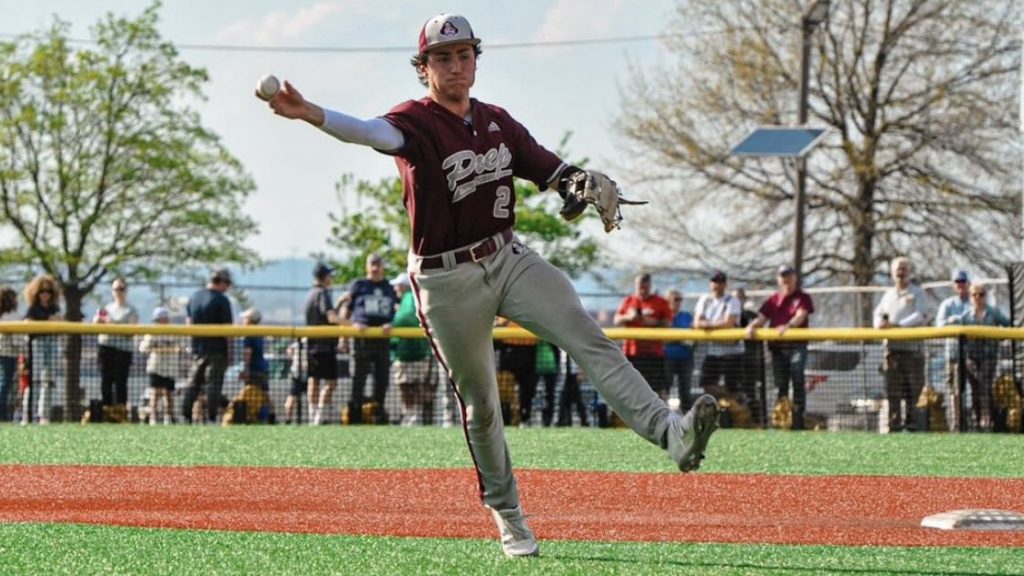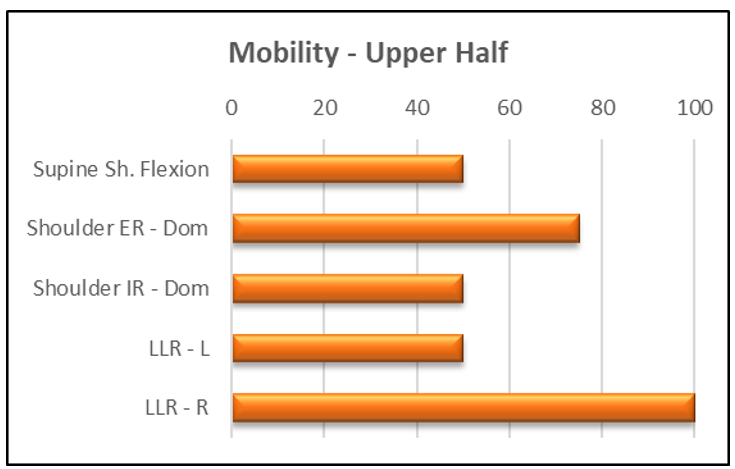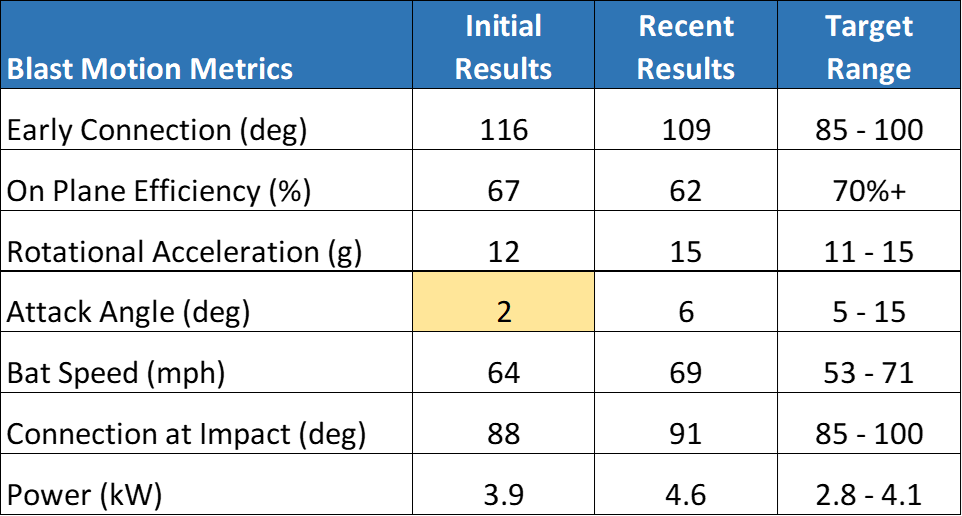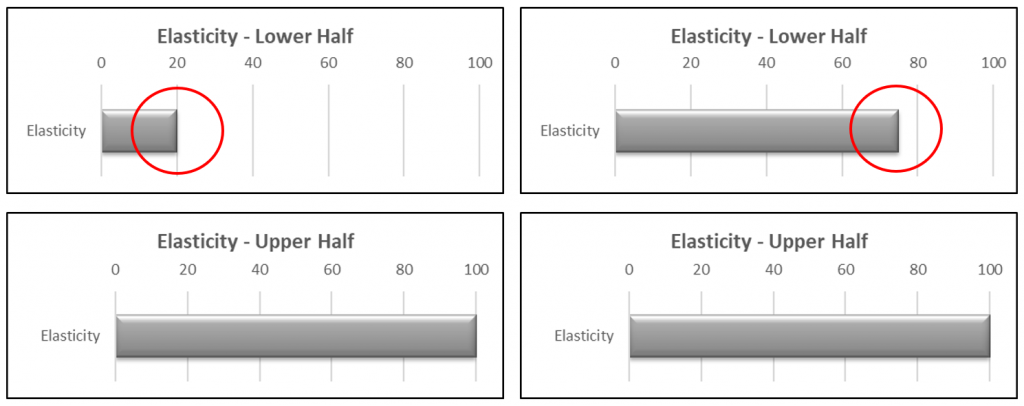
Senior Shortstop Chasen Kirk joined us last November in our 4-month off-season program to improve his performance at the plate. Five months later, he’s making his mark in the spring season, currently batting .382 vs .208 the prior year with exit velos 92+ mph.
What’s changed and how did he do it?
RPP Director of hitting Andrew Pezzuto started his training similar to every other athlete in our program with a thorough assessment. Making improvements in 4-5 months is all about chasing the lowest hanging fruit, both physical and mechanical. The assessment included:
-
- Physical
- Lean Body Mass Evaluation
- Movement Screen
- Strength and Power Testing
- Mechanical
- Video Review and Analysis
- Blast Motion Review
- K-Vest Analysis (sequencing)
- Physical
In Chasen’s case, his assessment showed that although he was strong, improving his lower half elasticity could help improve his adjustability and power at the plate. His height to weight ratio was 2.4x, which was close enough for our suggested range of 2.5-3.0x for high performance athletes. His Body Fat Percentage was 14%, also within our suggested range. The following were his strength test results. While good for his metrics there was Still room for improvement:
-
- Trap Bar Deadlift (est. 1RM) – 364 lbs.
- Bench Press (est. 1RM) – 216 lbs.
From a mobility standpoint, Chasen presented with some tightness in his upper half especially shoulder flexion and t-spine rotation, two big players in assisting loading of the upper half. In addition, he demonstrated some issues related to ankle mobility which were more than likely preventing him to get into a more efficient hinge when loading at the plate which presented itself in the following video analysis.

Upper Half Mobility

Ankle Mobility
Hitting Mechanics Analysis
In a sequential movement such as hitting, events early in the movement can create issues later in the swing. In Chasen’s case, an Excessive Negative Weight Shift and a lesser than desired Rear Hip Load were primary contributors to events downstream. The following is a brief summary of his hitting disconnects.
-
- Poor Rear Hip Load – Regardless of stance style, the swing begins and fires in a spring around the rear hip socket. Knees should be inside the ankles from stance and continue throughout the stride in order to carry tension in the lower body throughout the stride to eventually be released into the upper body.
-
- Excessive Negative Weight Shift – This is an excessive lower body lateral movement “away” from the pitcher during the negative move that forces the weight to the outside of the back foot. This can be caused by a number of things, namely poor ankle mobility / stability and / or issue with hip IR. Excessive weight shift during the negative move is a key contributor to timing issues of the lower body.
-
- Elbows at Heel Strike – The bat must be slotted with the Back Elbow positioned below the Front Elbow from heel strike to contact. This helps to create a top hand up, bottom hand down position through contact.
Swing Metrics – Chasen’s initial swing metrics were generally withing range for a high school athlete, however, there was one area in his Blast metrics (highlighted below) which could help him improve his performance at the plate. Chasen’s Attack Angle was low which points to a relatively flat swing at contact. This generally makes it difficult to elevate the ball. Addressing this metric was our number one priority.

Chasen was assigned several hitting drills to help improve his hitting and swing mechanics:
Movement Coil Drill
Activation Seated Load
Activation Independent Hands
K-vest (Posture) Assessment
K-vest is a motion capture technology which allows you to measure your posture and movement patterns of the upper body throughout the swing from first move to heel strike through to contact. Chasen’s initial results demonstrate relatively good overall postural patterns with a solid 1-2-3-4 kinematic sequence which allows to efficiently build angular velocity up the chain.

As with all things hitting, disconnects can all be interrelated. Fixing one can create positive changes further downstream. His K-vest postural reports highlighted the following:
-
- Pelvis Rotation @ First Move – This tells us if a player’s lower half has leaked early leading them to pull-off the baseball. On the other hand, an overly counter-rotated pelvis will cause poor sequencing due to the pelvis turning late.
-
- Results: -19 degree vs. desired range of -5 to 5 degrees
-
- Pelvis Rotation @ First Move – This tells us if a player’s lower half has leaked early leading them to pull-off the baseball. On the other hand, an overly counter-rotated pelvis will cause poor sequencing due to the pelvis turning late.
-
- Torso Bend @ Contact – A negative number here is preferred. This tells us if we are getting adequate leverage from the lead leg blocking and transferring energy. More than 5 degrees means that we may be hitting through the front leg instead of against it, ultimately leaking power up the chain.
-
- Results: 15 degrees vs. desired range of -5 to 0 degrees
-
- Torso Bend @ Contact – A negative number here is preferred. This tells us if we are getting adequate leverage from the lead leg blocking and transferring energy. More than 5 degrees means that we may be hitting through the front leg instead of against it, ultimately leaking power up the chain.
-
- Torso Side Bend @ First Move – This establishes correct posture in the swing. This also allows for a clean swing arc through the zone.
-
- Results: -12 degrees vs. desired range of -5-10 degrees
-
- Torso Side Bend @ First Move – This establishes correct posture in the swing. This also allows for a clean swing arc through the zone.
Recent Assessment and Improvements
The basic plan for Chasen was as follows:
-
- Improve upper half mobility, lat-length, and t-spine rotation specifically
- Increase overall strength and power levels
- Improve lower half elasticity
- Address swing metrics, specifically the Attack Angle
- Improve postural issues
- Improve rear hip load and excessive negative move
In a short time period, Chasen has made significant strides. He added nearly 10 lbs. of lean body mass, which puts his height to weight ratio over 2.5x. Below is a visual summary of his various across the board improvements.

Strength Levels – Pre and Post

Lower Half Power – Pre and Post

Upper Half Power – Pre and Post

Elasticity – Pre and Post
In addition, Chasen’s average Attack Angle has now risen to 6 degrees from 2 degrees initially. Believe it or not, that’s a significant improvement which will help him make better contact and elevate the ball more often.
On the posture side of things (K-vest), Chasen’s numbers have also improved dramatically.
-
- Pelvis Rotation @ First Move – Desired range of -5 to 5 degrees
- Results: 2 degrees vs. -19 degree initially
- Torso Bend @ Contact – Desired range of -5 to 0 degrees
- Results: -6 degrees vs. 15 degrees initially
- Torso Side Bend @ First Move – Desired range of -5-10 degrees
- Results: 1 degree vs -12 degrees initially
- Pelvis Rotation @ First Move – Desired range of -5 to 5 degrees
Summary
The net result of all this has generally helped Chasen make better contact with the ball as his exit velo has also increased by 6 mph, now 92+ mph. In addition, it goes without saying that improving his overall strength, mobility and elasticity / power have all contributed to improved his adjustability and performance at the plate.
His batting average this spring is nearly twice as high as the prior year, .382 vs. .208. Furthermore, his slugging average has also improved dramatically, from .271 to .500.
Great job Chasen, Keep up the hard work!

By Bahram Shirazi and Andrew Pezzuto (Director of Hitting)
You live too far to train with us in-house at RPP? You can now train with us on a REMOTE basis.


